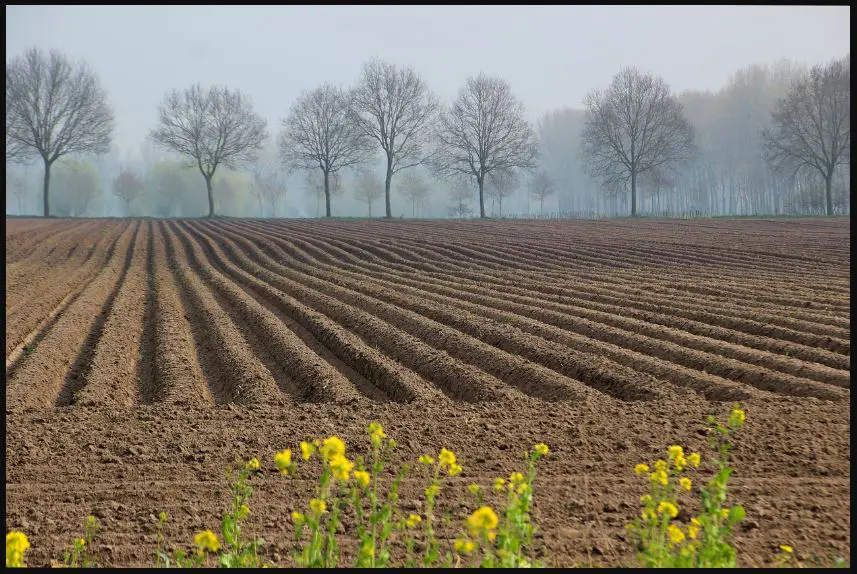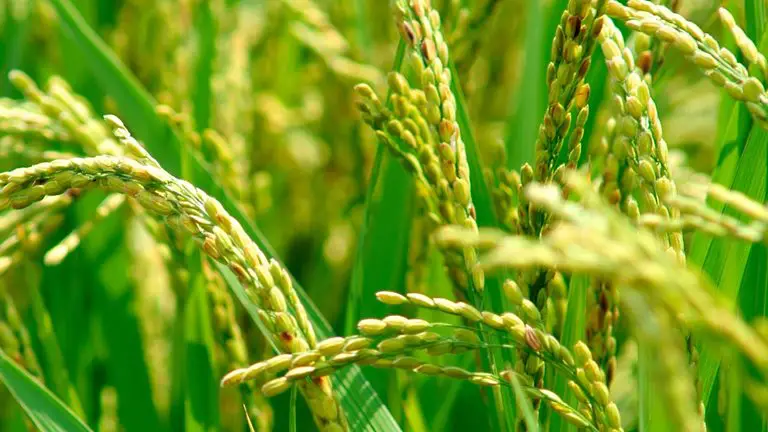About Land Holding in India | UPSC – IAS
Land is the basic means of production in an agrarian society without which no agricultural production can take place. Two aspects of land that affect the agriculture efficiency are:-
- Size and distribution of land holdings, and
- Land tenure system.
Landholding is defined as the area of land which a person or a family owns. It could be one piece of land or a number of small scattered pieces of land. At the time of independence, what prevailed were division, subdivision, and fragmentation of landholdings. In every country, the land tenure system is very important for the development of agriculture. According to the Vera Anstey, “The position of agriculture and agricultural production in any country is dependent, to a large extent, upon the relationship between the land-holding and land ownership in that country.”
Hence this post includes the following aspects:-
- Land Tenancy
- Size of Land Holdings and Fragmentation of Fields
- Consolidation of Land Holdings
- Ceiling on Land Holdings
- Land Holdings Distribution in India
Land Tenancy | UPSC – IAS
- Land Tenancy is an institutional factor which affects agriculture development. Land Tenancy means temporary possession of ownership of land by a tenant. The ownership of agricultural land is determined by the law of Land tenure and Land Tenancy.
- The main problem in relation of farming in India is the relationship between the landlord, the cultivator and the government. The landlord and the cultivator may be two separate persons, or the same person may own and cultivate the land. The landlord is also related to the government and is responsible for the payment of land revenue. Therefore, the relationship between the landlord, the cultivator, and the government is known as the “Land tenure system” or as the ‘Cultivation Tenure system’.
- A land or cultivation tenure system refers to the possession of rights for the use of land. There may be many different situations in which the cultivator has rights over the land. At one extreme of such situation is ownership, where the farmer himself is the owner or the landlord. On the other extreme is the landless agricultural labourer. There are many intermediate system between these two, such as cropping tenant cultivators, non tenant cultivators, sub-cultivator, etc.
- The land tenure system has a major effect on the efficiency of the farmer, and also on the insecurity involved in the cultivation of land. Before the advent of British rule, the land tenure system in India was static. The system implemented by the British also did not encourage economic development in any way. So, during the period of the British rule, the main aim of the land tenure system was to generate income. But, under this system, no efforts were made towards any economic development and the upliftment of the farmers. In India at the time of independence, there were three main land tenure systems. They are, –
- The Ryotwari system,
- The Mahalwari System and
- The Zamindari system.
Size of Land Holdings and Fragmentation of Fields | UPSC – IAS
- In India the size of land holdings is too small. This is due to overpopulation. Due to the rapid growth of population and the existing law of inheritance, the agricultural land is divided equally among the male children of the deceased farmer.
- At present, the per capita available land is only about 0.10 hectare. This is much below the world average of about 4.50 hectares. Over 75% of the land holding are less than one hectare. Such small holdings are not economically viable. In fact, small holdings cannot produce enough to meet the costs of irrigation, improved seeds, chemical fertilizers, insecticides, pesticides and farm machinery.
- Another important feature of land holdings is that each of the 105 million holdings comprises 4 to 8 plots scattered far away from each other around the farmer’s village. The average size of each plot is not more than one-fifth of a hectare. This type of fragmentation of land poses one of the most serious obstacles to any efforts to increase agricultural productivity in India.
- Here fragmentation refers to division, and in agricultural point of view it can be defined as, a situation under which a cultivator owns an operational holding consisting of more than one plot of land. Therefore, the fragmented land has been considered as comprising of two or more plots of land which may be separated from one another. These repeated subdivision and fragmentation of land are major problems affecting agriculture. Division of land into equal lots among settlers is followed by further subdivision. Continuous growth of population has further forced the problem as it became necessary to break up and distribute common lands. Hence this system of inheritance made such problems still more worse.
Effects of Fragmentation
There are lots of disadvantages from fragmentation of land. They are,
- Most of the labour of the farmer and his animals is exhausted in journey from one plot to another.
- Most of the time of the farmer is lost in shifting animals, fertilizers, seeds and other equipments.
- A good proportion of cultivated land is wasted in boundaries, hedges, ditches, footpaths, etc.
- the use of modern farm machinery in small fragments is virtually impossible in the fragmented land.
- It is responsible for increased overhead costs, including even the cost of production resulting in low returns from agriculture.
Consolidation of Land Holdings | UPSC – IAS
It is important to know that farms in India are not only small in size but also distributed in a scattered way. Unless the farm-land is of reasonable size, farmers cannot make proper use of their resources. In the interest of progressive farming, it is essential that the farmer be given one consolidated piece of land. Hence, the conversion of many small and fragmented holdings in to one or two big farms is called Consolidation of Land Holdings.
Methods of Consolidation
Two methods of consolidation have been adopted in India. They are,
- Voluntary consolidation: If the farmer agrees voluntarily to get his holdings consolidated, it is called voluntary consolidation. The process of voluntary consolidation in India was first initiated in 1921 in Punjab. It is found to be the best method, as no pressure is exerted on anybody. The work of co-operative consolidation society does not lead to any dispute, but its progress is very slow. Zamindars usually create hurdles in its progress. Laws of favoring voluntary consolidation have been passed in Gujarat, Madhya Pradesh and Bengal.
- Compulsory Consolidation: When consolidation is made compulsory by law, it is called compulsory consolidation. It may be of two types:
Partial Compulsion: Under this, if a majority of farmers in a village agree to get their holdings get consolidated, then the rest of the farmers too will have to get their holdings consolidated, according to the law.
Complete Compulsion: In this case, the government by legislative enactment introduces an element of compulsion in the process of consolidation. Maharashtra was the first state to enact compulsory consolidation. Now in many states have also passed laws to this effect.
Advantages and Disadvantages of land Consolidation | UPSC – IAS
Advantages of consolidation
- Scientific methods of cultivation become possible on consolidated land.
- Time, effort and money wasted in moving from one farm to the other are saved.
- The farmer feels encouraged to spend money on the improvement of his land.
- No land is wasted in making boundaries.
- Irrigation can be done efficiently.
Disadvantages of Consolidation
There are many difficulties in consolidation. The notable ones are:
- Lack of records: In many areas records showing title to the land are not available.
- Lack of trained staff: Consolidation work is a technical work, it requires trained persons. Such trained staff is lacking.
- Expenditure: It is an expensive operation. It is a problem to meet this expenditure.
- Differences in the Land value: One of the main difficulties pointed out by the Fourth Five Year Plan was variation in the price of land in the villages. This variation is chiefly due to irrigation facilities. In brief, consolidation of land holdings reduces the problem of fragmentation of holdings. While doing so, the size of the farms is enlarged. Hence, it t helps in increasing agricultural production.
Ceiling on Land Holdings | UPSC – IAS
Ceiling on land holdings mean fixation of maximum size of holdings and to take away surplus land, if any, for distribution among others. Land over and above the ceiling limit is called as surplus land, and such surplus land is taken from the landlord on payment of compensation. This surplus land is distributed among small farmers, tenants, landless labourers. The objectives of ceiling on land holdings are;-
- To minimize inequality in the ownership and use of land so as to provide social benefit to all.
- To reduce inequality of income from agriculture.
- To provide self-employment opportunities to agricultural labourers.
- To satisfy the desire to own land.
Ceiling on land holdings is of two kinds. They are:-
- Ceilings on Existing Holdings: In this case ceiling is imposed on the present holdings. Land above the ceiling limit is declared surplus and taken by the government.
- Ceilings on Future Acquisition of Land: Under this, ceiling is fixed on the land that an individual or a family may acquire in future with a view to enlarging their existing holdings.
Progress of Ceilings on Land Holdings: In almost all states of the country ceiling on land has been fixed. In case of irrigated land, land ceiling varies from 4 to 7 hectares; while in case of dry land ceiling varies from 8 to 70 hectares. So far 73.36 lakh hectares of land has been declared surplus.
Advantages of Ceilings on land holdings | UPSC – IAS
- Reduction in Inequality: Supply of land being limited and its demand being unlimited, it becomes essential that land should be divided among larger number of people. When all farmers get some land, inequality in the distribution of land gets reduced. Agriculture being the main source of income in villages, there will be reduction in income inequality and social inequality as well.
- Development of Cooperation: It will promote spirit of cooperation among villagers because the land available after imposition of ceiling, can be cultivated on cooperative basis.
- Increase in cultivated area: Large tracts of land belonging to big zamindars remain uncultivated. When these lands handed over to landless labourers, it may bring them under cultivation. As a result, total cultivated area in the country will increase.
- More Production: Equal distribution of land may also encourage intensive cultivation resulting in increased agricultural production. Farm management studies conducted in India testified that small farms yielded more production per hectare. It is so because family members themselves cultivate small farms.
- Increase in Employment: Fixation of ceiling on land holdings is expected to increase employment. On one side, landless farmers get some land for cultivation. On the other, there will be more demand for goods owing to increase in the income of the farmers. To meet the increased demand, more labourers are to be employed.
- Economic size of holding: Land declared surplus consequent upon ceiling on land holdings could be distributed among small farmers turning their holdings in to economic holdings.
- Decrease in Class Struggle: With reduction in inequality among the villagers, possibility of class struggle will be minimized. They will live with perfect peace and harmony.
- Advantages to landless labourers: If ceiling on land holdings is fixed at lower levels in all states, then huge surplus land will be available. It will provide basic holdings to most of the landless labourers. Evaluation: As a result of ceiling on land holdings, roughly 160 lakh hectares of land was likely to be made available as surplus land. However, only 73.36 lakh hectares of land has been declared as surplus. Thus, progress in this direction is very slow.
Land Holdings Distribution in India | UPSC – IAS
- India is a big country and also called as sub continent. The government of India categorizes farmers with less than 1 ha of land as “marginal” and those with 1-2 ha as “small” farmers. Almost 20% of the survey households were landless and 42.7% had marginal or sub marginal landholding, thus fragmentation of landholdings was high.
- Data from land and livestock surveys conducted by the National Sample Survey Organization (NSSO) are the most important source of information on distribution of landholdings in India. As part of these surveys, detailed data are collected on ownership and operational holdings, tenancy, nature of land use, status of irrigation, and cropping pattern.
- The distribution of ownership holding of land in India is extremely unequal. In many states of India, a substantial share of land continues to be in the hands of large landowners (having more than say five hectares of land). States that are particularly noteworthy in this context are Punjab, Haryana, Gujarat, Maharashtra, Karnataka and Andhra Pradesh. Clearly, a substantial potential for land redistribution exists in these states. It may be noted that large landholding sizes in Rajasthan and in parts of some other states in central and western India are also associated with poor quality of land. In contrast, in Kerala, West Bengal and Tripura, three states where substantial land reforms have been implemented, a very small amount of land is now under large holdings.
- Since independence, in India, a number of steps have been taken to make structural changes in the agrarian societies and land reforms. The Kumarappa Committee, also known as the Congress Committee of Agrarian Reforms, recommended:-
- Comprehensive measures for land distribution,
- Creation of basic holdings,
- Tenancy reforms,
- Organization of small cooperative reforms and
- minimum agricultural wages.
But so powerful was the lobby of the big and middle class peasants that the recommendations were shelved. The enthusiasm for land ceiling is much greater now, but it is doubtful whether the results will be encouraging. We all know that, what is socially justified may not be economically efficient and politically acceptable.



